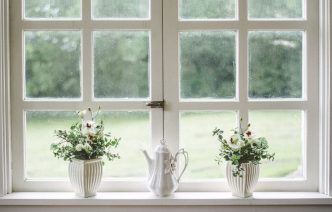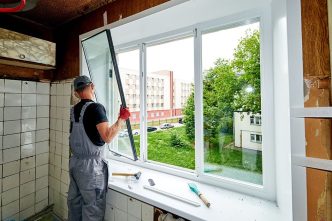History and Evolution of Glass Blowing
Natural glass occurs when certain rocks and minerals melt or are fused together due to lightning strikes, volcanic eruptions or meteor strikes. When melted rock cools quickly, glass is formed. Ancient man is believed to have used the natural glass known as obsidian as cutting tools. Obsidian is formed when volcanic lava cools suddenly creating a distinctive black glass. While the earliest examples of ornamental glass are seen in beads and pottery, it was some time before the craft of glass blowing was developed.
Glass Blowing in Ancient Rome
It wasn’t until around 300 BC that the Syrians invented the blowpipe which formed the foundation for the craft of glass blowing. During the Roman Empire, new techniques and experimentation began and these techniques are still used in glass blowing today. Roman craftsmen often used molds in conjunction with glass blowing to form new shapes and vessels. They also experimented with colors and adding gold and silver inlays to glass objects. Glass enameling later perfected by the glass blowers in the Middle East and Egypt began during the time of the Roman Empire.
Italian Glass Makers and the Middle Ages
Venice, Italy became the center for glass making as a result of trade with the Middle East. During the Middle Ages, the Italian government was so intent on guarding their monopoly on the glass trade that they ordered all glass blowers to move to the island of Murano in 1291. Murano craftsmen developed a clear glass and vivid colors that are still in demand among collectors today. Although the Murano glass blowing trade was a closely guarded secret and anyone caught leaving the island could be sentenced to death, some craftsman did manage to leave and helped spread new techniques throughout the greater parts of Europe and Asia.
The Renaissance and Glass Art
During the Renaissance, the art of glass blowing and other glass making techniques began to widely spread with the publication of a book by Antonio Neri called L’Arte Vetraria or The Art of Glass. With the publication of this book, all secrets of glass making were revealed. With this knowledge and additional new technologies including leaded glass and the use of diamond engraving, the art of glass making spread throughout Europe and Asia. Venetian glass blowers introduced the art to England during the Renaissance period.
Early American Glass Production
In 1607, Jamestown, Virginia was settled by the Virginia Company of London. Glass blowing was introduced to America through the glasshouse in Jamestown. It was thought that by establishing glass blowing in Jamestown, the company could profit from the sale of bottles, jars and other glass blown items. When the first glasshouse proved to be unsuccessful, a second attempt was made in 1622.
While the early glass blowing industry at Jamestown failed to provide the profits the London company hoped for, it did open the doors to the future of glass blown pieces throughout America in later years.
Glass Blowing During the Art Nouveau Period
Prior to the late 1800s, glass production was largely centered on practical use such as jars, bottles, and panes of clear glass for windows. During the 20th century, artists and designers worked together to combine artistic design and practical functionality in many glass pieces. Glass work by artists Eugene Rousseau and Emile Galle introduced the Art Nouveau style in glass designs at the 1878 Paris Exhibition. It was Galle’s designs which influenced Louis Comfort Tiffany (Tiffany Jewelers) to begin designing glass pieces. Still it took almost another 100 years before glass artists began to work independently from their own studios rather than in a factory environment. Working independently allowed glass artists to fully explore a wide variety of glass working techniques involving both hot and cold applications. The development of portable glass furnaces opened yet another possibility to glass blowers for independent design and crafting.
From the 1960s to the Future
The studio glass movement began in America during the 1960s and quickly spread around the world. While individual glass artists such as Harvey Littleton opened independent studios and experimented with new techniques in glass blowing, casting and glass carving, museums across the country began to look at glass blowing as a serious art form. The Pacific Northwest quickly grew as the hub for studio glass art and is the home of the Museum of Glass Art in Tacoma, Washington as well as the famous Pilchuck Studio. The studio glass movement continues to evolve today and no doubt will continue to do so as newer technology emerges. Glass blowing and the studio glass designs place the emphasis on the designer/artist who may be the glass blower or who may work with a team of glass blowers. The work of Dale Chihuly is a well-known example of a team of glass artists working together. Glass blowing has come a long way from those secretive beginnings as studio glass communities continue to share technology and ideas.
-
Ancient Glass – Ancient glass was rare. Some of the earliest examples of ancient glass were discovered in Egyptian tombs. This page describes the properties and characteristics of ancient glass.
-
Chemical Composition of Glass in Ancient Egypt – Here is a good explanation of the chemical composition of glass in Ancient Egypt. Various chemical compositions determine glass colors.
-
The World’s Oldest Glass Works – This National Geographic article shares the discovery of the world’s oldest glass works found in the ruins of an ancient city within the Nile Delta region.
-
Roman Glass – This page presents information on both cast glass and blown glass development in early Roman culture.
-
Ancient History Encyclopedia: Roman Glass – This article presents examples of ancient Roman glass and the techniques used to produce molded glass pieces by blowing glass into casts.
-
Jamestown Glasshouse – This is the National Park Service page containing information about the Jamestown Glasshouse. It is believed that glass blowing was the first English attempt at industrialization and manufacturing in the colonies.
-
Dale Chihuly: Glass Blowing Artist – Glass blowing artist Dale Chihuly has been credited with making glass blowing a fine art.
-
Corning Museum of Glass – This museum houses perhaps the largest collection of glass found anywhere. There are also ongoing glass blowing demonstrations and interactive workshops. Visit the website or contact the museum staff for schedules and updates.
-
Jamie Guerrero – This is the website for glass artist and craftsman Jamie Guerrero.
-
The Beginners Guide to Flame Working – If you are interested in exploring glass blowing as a hobby, this site offers plenty of resources to get you started.
-
Glass Blowing Learning Center – This website offers useful information regarding tools and techniques involved in the glass blowing process. Additional links to tutorials are also found here.
-
The Wonderous Process of Glass Blowing (PDF) – This document shares an illustrated step-by-step process of glass blowing.
-
A Short History of Glass (PDF) – Published by the chemistry department at Boise State University, this document provides a brief history of glass blowing.
-
Glassmaking and Glass Makers – This page describes different techniques used in making bottles and helps identify free blown, mold blown, or handmade and pressed bottles.
-
Careers in Glass Blowing – Are you interested in a career as a glass blower? This site gives a good overview as well as resources to help you decide if glass blowing is a good career for you.
-
Types of Mouth-blown Glass – This page explains the difference in types of mouth-blown glass. Also explained are the differences found in glass including various types of stain-glass art.
-
Glass (PDF) – This document provides an extensive amount of information on glass, glass works, glass blowing processes, and equipment.
-
Valuable American Blown Glass Bottles – This page cautions the buyer to beware if not an expert in early American bottles. Things to consider include Mexican reproductions that have fooled many collectors throughout the years. Examples of authentic early American blown bottles are given.
-
Glass Blowing Team – While possible to work solo as a glass blower, this page details the advantages of working together as a team.
-
Safety in the Glass Lab (or Studio) PDF – This document provides safety reminders that are helpful not only in a lab setting but also whenever anyone is taking part in the glass blowing process.
-
History of Murano Glass – Here is a deeper look into the history of the world-famous Murano glass from Venice.
-
Murano Magic – This site goes into great detail surrounding the origin of the Murano glass traditions and highlights the reasons for the growing revival of interest that makes Murano glass a favorite among glass collectors around the world.
-
The Glass Blowing Process – This page on the Sacramento Art Glass site explains the steps involved in the glass blowing process. This site also has a gallery of blown glass items to view.
-
Pilchuck Glass School – This school began as a single summer workshop in 1971 taught by Dale Chihuly. It has since grown into the largest glass art education community in the world.
| Wood Windows and Doors | Additional Window Options | Home Services |
|---|---|---|


